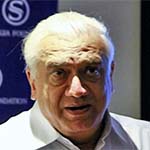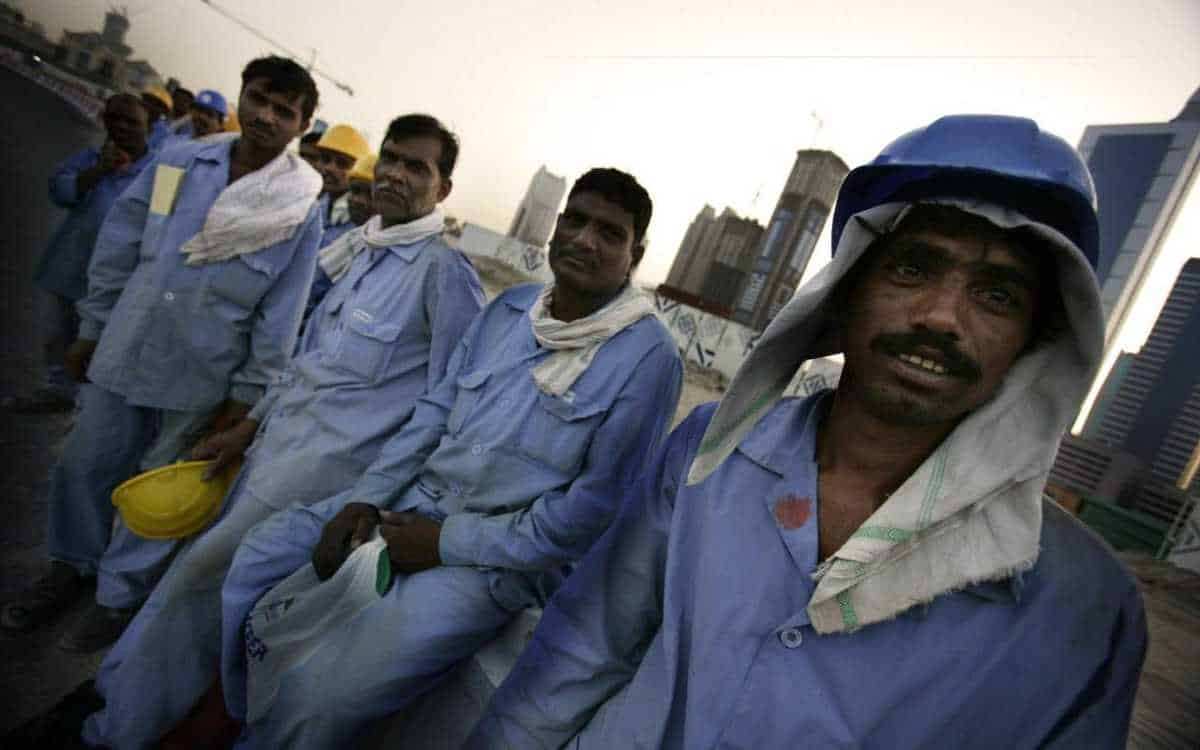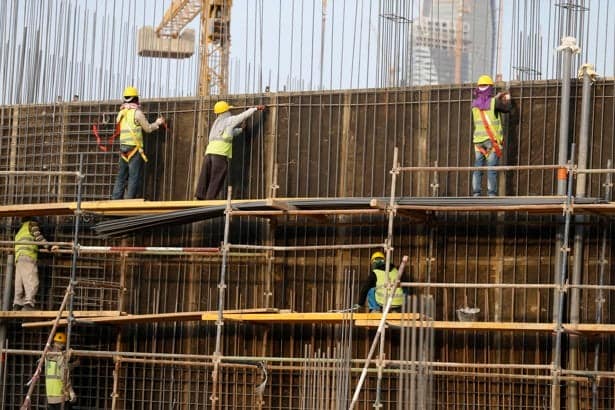This is the third and final part of the article written by Talmiz Ahmad. He is a former diplomat, holds the Ram Sathe Chair for International Studies, Symbiosis International University, Pune, and is consulting editor, The Wire. This article was first published by The Wire.

Talmiz Ahmad
The Gulf communities imported foodstuffs, textiles, wood and metal from India, while Indians imported horses and pearls which were then made into jewellery and sold globally. The Indian rupee was used in the Gulf from the 16th century up to the 1960s. Today, in Oman, about a hundred Kutchi families have Omani nationality; they are headed by their own “Sheikh”, Kanakbhai Khimji.

As the British consolidated their political power over the Gulf from the early 19th century, the administration was entirely manned, financed and controlled from India. Resident Indian communities flourished as business persons, professionals, technicians, government officials and skilled workers. James Onley has in fact argued that the Gulf constituted the outer edge of the British Indian empire:
“For over 4000 years, Arabia fell within the economic and cultural orbit of India. During the British rule, it also fell within the political orbit of India. Between 1820 and 1947, its political affairs were dominated by the East India Company and its successor, the British Government of India. Arabia was the western-most frontier of the British Indian Empire.”
India had a tremendous influence on the cultural life of people in the Gulf in terms of local architecture, clothing and cuisine. Gulf Arabs enjoy Indian curried lamb, biryani and seekh kabab and even the humble samosa is a delicacy to this day; the Indian “kadak chai” is an addiction. The Gulf countries are the main markets for India’s basmati rice.
With the influx of oil revenues, the Gulf went truly global – now major international corporations came to the region to execute high-value infrastructure, energy and manufacturing projects. India again rose to the challenge – it soon became the principal source of manpower to execute the projects. Commencing with just a million in the early 1980s, the Indian community expanded to three and a half million by 2000, six million by 2010 and now stands at over eight million. This community remits about $35 billion to India annually.
Indians are the largest expatriate community in every country of the Gulf and are the majority in three countries – the UAE, Bahrain and Qatar. The profile of the community has also changed: in 1990, it was 90% blue-collar; today, though six times larger, it is just about 65-70% blue-collar, with at least 20% being professionals – engineers, doctors, managers and accountants. Hundreds of Indian chartered accountants hold distinguished positions in Dubai, Abu Dhabi and Oman and dominate the upper levels of the financial sector.
The last few decades have witnessed the emergence of entrepreneurs from within the community, from small business persons to tycoons of international standing in the areas of health, construction, education, infrastructure, finance and retail services.
Over the last 20 years, India has become a major importer of hydrocarbons from the Gulf – 50% of its imported oil and gas comes from the GCC. The GCC countries collectively are among the top three of India’s trading partners in terms of blocs, while two GCC countries – the UAE and Saudi Arabia – are in the top five of India’s trade partners. The UAE is also India’s number two export destination, after the US. Even as GCC countries have increased their investments in India, Indian corporations too have expanded their presence in the region in the infrastructure and energy sectors.
The Gulf countries – with the exception of Saudi Arabia – have not attached any significance to faith in the public domain; they have recruited people and given them opportunity without regard to their belief. Thus, the UAE has over a hundred nationalities, with Indians being about 55% of the total. All GCC countries, except Saudi Arabia, have temples and churches as well as burial and cremation grounds for non-Muslims.
Even in Saudi Arabia, which is founded on an affiliation with the narrow and rigid Wahhabi doctrine, faith has generally been an instrument for the assertion of political authority rather than reflecting a serious commitment to belief. On the one occasion when the kingdom banned the recruitment of Sikhs in the early 1980s (which was quickly reversed under diplomatic pressure), there has never been any bias in favour of Muslims in local employment. Hence, reflecting India’s population, the majority of Indians in the Gulf in different categories, including the tycoons, are non-Muslims.
Outlook for ties
At this point, it would be useful to place the recent acrimony in perspective. There has been no comment from GCC official sources. All told, there have been only a few hate messages from Indians resident in the Gulf. From the GCC side, the responses have been few and restrained: anger has been directed at specific sources of the tweets and collectively only against extremist Hindutva elements. There has not been a generalised critique of India; unlike the Hindutva messages, there has been no communal content in the GCC tweets. In fact, the GCC responses have expressed anguish at what they see as the betrayal of India’s time-honoured values – accommodation, moderation, respect for women, etc.
This is not surprising. The Gulf communities have never viewed India through a communal prism, only in the framework of India’s core principles – democracy, secularism and pluralism in a multi-cultural society. India is seen as unique among developing countries in that: it is a democracy; it is a secular and pluralistic society, where both personal law and civil codes co-exist, the latter even providing for cross-communal marriages; it has a free press and an independent judiciary; and, within this framework of democracy and pluralism, it has made great strides in economic and technological achievement.
It will surprise India’s zealots to learn that the Indian “model” has evoked extraordinary respect and admiration across the region over the last several decades.
It is not as if the region did not know of the periodic communal conflagrations in India; but these were viewed as aberrations in a large and diverse nation. Thus, there were no public criticisms of India from official sources after the destruction of Babri Masjid and the subsequent riots.
When this writer, as Indian ambassador to Saudi Arabia in 2002, attempted, under government instructions, to explain the post-Godhra violence to a senior Saudi minister and royal family member, the latter said no explanation was called for; this was an exceptional episode. Saudi Arabia had full confidence in India’s commitment to its essential values of pluralism and accommodation of all its diverse communities.

Still, there is no room for complacency. The hate messages that proliferated in the Gulf did not originate in the region; they were churned out in India where a hate industry is in full swing, disseminating fake news and abuse through hundreds of messages on social media that are then enthusiastically and mindlessly repeated by its cohorts. What the recent exchanges have done is to expose Hindutva in its full nakedness and ugliness to the Gulf public. It has planted the first concerns that India might no longer be shaped by its traditional values; that the India they knew and cherished is perhaps withering away before their very eyes.
Will this impact on India’s political and economic ties with the region and the continued recruitment of its people? Perhaps not in the immediate future. The region’s rulers are objective and hard-headed in understanding their interests – they know that India will continue to need their energy resources and they will continue to need India’s manpower. Certainly, there is no other nationality that can substitute for the skill, the discipline and the apolitical character of the Indian. In their recent personal interactions with the region’s leaders both Modi and Jaishankar have played on these realities.
But, while the rulers do not permit religiosity in the public space for political purposes, the pervasive society is still Muslim. And, whatever the wishes of the rulers, Islam, generally projected as “moderate,” remains a force in the region’s political order. Saudi Arabia uses its guardianship of the two holy mosques of Makkah and Madinah to promote its leadership of the global Muslim community. Qatar is firmly anchored in political Islam. It has affiliated itself with Turkey and Iran and regional Islamist movements to promote its interests on this basis. Kuwait has a Muslim Brotherhood-affiliated political party that is influential in domestic politics.
The UAE prides itself as an exponent of moderate and “enlightened Islam”, but Islam remains an important factor in its foreign policy. As Giorgio Cafiero has noted:
“In what is called the ‘geopolitics of religious soft power,’ the UAE utilizes Islam to strengthen its regime’s legitimacy, compete with rival states’ visions for Islamic leadership, and project an image of moderation and tolerance before global actors, namely Western countries. Along with Egypt, Jordan, and Morocco, the UAE has sought to present itself as a purveyor of “moderate Islam” that stands firmly against extremism.”
Unquestionably, domestic considerations heavily influence the UAE’s use of Islam in its foreign policy. At the heart of the Emiratis’ reasons for utilising religion in this manner is the Abu Dhabi regime’s fear of political Islam fuelling change in the Emirates.
Now that the region has been made familiar with the ideology, agenda and aggression of Hindutva adherents, it is difficult to believe we can go back to business-as-usual. Can Modi’s persona continue to radiate across the Gulf’s firmament while the Muslim community at home is being demonised, abused and violated? The challenge before Modi and his colleagues is to sincerely and robustly confront the hate and abuse being spewed by their cadres at home that are then impacting attitudes and mind-sets in the Gulf and are jeopardising the centuries-old ties we have enjoyed with this region.
There is a sharp warning coming in from the Gulf – alongside several other sources. But are there listeners in Delhi?
Concluded

